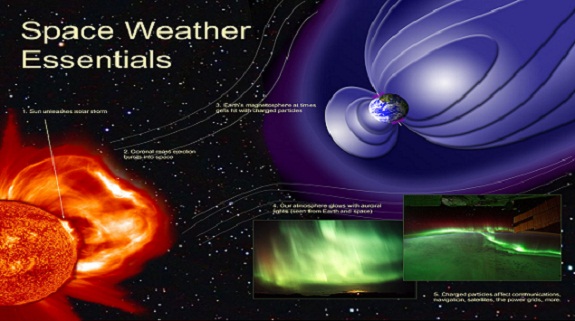| Online: | |
| Visits: | |
| Stories: |

| Story Views | |
| Now: | |
| Last Hour: | |
| Last 24 Hours: | |
| Total: | |
G3 (Strong) Geomagnetic Storm Watch Issued for 20-21 Sep 2015 / Incoming CME Could Spark Equinox Auroras (+Video)
NEW UPDATE: Geomagnetic Storm in Progress – Sep. 20, 2015
Strong (G3) Geomagnetic Storming observed due to a shock passage on Sunday morning. Sky watchers at high latitude should be alert for visual aurora if it is still dark outside.
ALERT: Geomagnetic K-index of 7
Threshold Reached: 2015 Sep 20 0750 UTC
Synoptic Period: 0600-0900 UTC
Active Warning: Yes
NOAA Scale: G3 – Strong http://www.solarham.net/
UPDATE: G3 (STRONG) OR GREATER WARNING ISSUED UNTIL 1200 UTC ON 20 SEPTEMBER http://www.swpc.noaa.gov/news/update-g3-strong-or-greater-warning-issued-until-1200-utc-20-september
G1 Geomagnetic STORM WATCH ISSUED for 20-21 Sep 2015 / INCOMING CME Could Spark EQUINOX AURORAS
Solar Wind Speed: 538 km/sec - Solar Wind Magnetic Fields: Bt 21 nT, Bz -15 nT
Isolated periods of minor geomagnetic storm conditions are likely on 20 Sep due to the influence of a positive polarity coronal hole high speed stream (CH HSS). G1 storms are likely again early on 21 Sep due to continued CH HSS influence in addition to the anticipated arrival of a CME from 18 Sep. http://www.swpc.noaa.gov/
http://www.swpc.noaa.gov/news/g1-minor-geomagnetic-storm-watch-issued-20-21-sep-2015
INCOMING CME COULD SPARK EQUINOX AURORAS: Sunspot 2415 erupted on Sept.18th, and although the resulting C-class flare was minor, it did hurl a CME toward Earth. The Solar and Heliospheric Observatory recorded the expanding cloud as it raced away from the sun.
The CME is traveling mostly south of the sun-Earth line. Nevertheless, the cloud’s northern flank could deliver a glancing blow to our planet’s magnetic field on Sept. 21st, less than two days before the northern autumnal equinox.
This is potentially good news for sky watchers because, for reasons researchers do not fully understand, auroras love equinoxes. At this time of year even gentle gusts of solar wind can spark a nice display of Northern or Southern Lights. http://spaceweather.com/
A new sunspot unleased an M1.5 class solar flare.
As expected, a new sunspot tentatively numbered 2420 is now turning into view off the northeast limb.
AR2420 introduced itself with a medium class flare but it is still too early to tell just how active or complex the region is, however we will learn more during the next 24-48 hours. http://www.solarham.net/
These images were taken by the SDO and SOHO solar spacecrafts.
http://sdo.gsfc.nasa.gov/data/
http://sohowww.nascom.nasa.gov/home.htmll

Image credit: NASA/SDO http://sdo.gsfc.nasa.gov/data/



